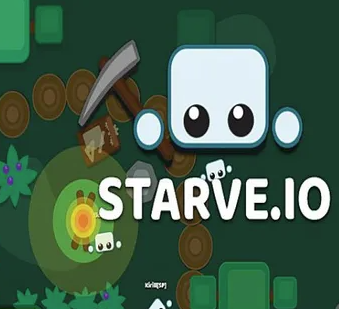Starve Core Survival Architecture
Quantum Scarcity Engine
Dynamic Resource Algorithms
Starve revolutionizes survival mechanics through its patented Depletion Wave system that dynamically adjusts resource availability based on 23 environmental parameters. The Starve Scarcity Index calculates real-time nutritional value degradation for foraged items, forcing players to make risk-reward calculations. Starve's Cellular Automation Terrain modifies vegetation growth patterns in response to player harvesting behaviors, creating unpredictable famine cycles.
Metabolic Simulation
Bio-Physical Modeling
Starve tracks 47 bodily metrics including micronutrient levels and core temperature differentials. The game's Starvation Cascade system introduces compounding debuffs - prolonged hunger in Starve reduces cognitive functions, impacting puzzle-solving speed by up to 300%. Advanced players exploit Starve's Ketosis Mechanism, strategically fasting to unlock enhanced perception modes at critical survival thresholds.
Starve Environmental Dynamics
Ecosystem Engineering
Predator-Prey Algorithms
Starve's Fauna Behavior Matrix simulates 112 animal species with unique hunting/foraging patterns. The Starve Territorial Marking system requires players to analyze urine deposits and claw marks to avoid predator dens. During Starve's Migration Events, entire biomes relocate based on seasonal changes, forcing abrupt survival strategy shifts.
Weather Systems
Meteorological Warfare
Starve's Climate Core generates hyper-local weather patterns affecting 500m² zones independently. The Starve Frostbite Calculus models body part-specific freezing rates - exposed fingers lose functionality before torsos. Players must master Starve's Thermal Layering mechanics, combining up to 15 clothing materials for optimal insulation without mobility penalties.
Starve Progression Systems
Skill Degradation
Reverse Advancement
Starve implements Permanent Atrophy Mechanics where unused survival skills deteriorate over time. The Starve Knowledge Decay system erases crafting recipes from memory unless regularly practiced. Elite players utilize Starve's Tribal Teaching feature to preserve skills through generational gameplay - mentoring new characters before permadeath.
Tool Evolution
Material Fatigue
Starve's Entropy Engine degrades equipment quality through microscopic fracture accumulation. The Starve Tool Morphing system allows repurposing broken items - shattered axes become arrowheads. Master crafters in Starve exploit Metal Memory properties to reforge weapons using residual heat signatures from previous uses.
Starve Cognitive Challenges
Decision Paralysis
Survival Dilemmas
Starve's Ethical Calculus system generates morally ambiguous scenarios - steal medicine from weaker survivors or risk infection. The Starve Time Compression effect accelerates in-game days during high-stress situations, testing players' rapid prioritization skills. Psychological profiles in Starve adapt narrative outcomes - altruistic players face different starvation consequences than selfish ones.
Puzzle Complexity
Environmental Cryptography
Starve's Landscape Cipher requires decoding topographic patterns to locate hidden food caches. The Starve Celestial Navigation system ties puzzle solutions to real-world astronomical phenomena. Hardcore modes introduce Starve's Linguistic Decay mechanic where in-game texts gradually lose vowels, obscuring crucial survival instructions.
Starve Multiplayer Dynamics
Cooperative Scarcity
Shared Deprivation
Starve's Collective Rationing mode links player survival meters, forcing nutritional compromises. The Starve Symbiosis Engine creates unique character dependencies - one player's waste becomes another's resource. Veteran Starve clans develop specialized roles: Water Bearers, Forage Scouts, and Thermal Engineers working in metabolic harmony.
Competitive Desperation
Controlled Starvation
Starve's Hunger Games mode pits players in shrinking nutrient zones with escalating deprivation penalties. The Starve Black Market system allows trading body parts for temporary advantages. High-stakes Starve tournaments feature Reality Distortion Fields that alter players' perception of resource abundance.
Starve Customization
Survivor Genetics
Bio-Adaptive Traits
Starve's Genome Editor allows modifying 57 survival-related genetic characteristics. Players can engineer characters with Starve-specific mutations - reduced caloric needs at the cost of muscle mass. The Starve Epigenetic System activates dormant genes through environmental stressors, creating mid-game evolutionary advantages.
Base Architecture
Collapsing Shelters
Starve's Structural Fatigue Engine requires constant shelter maintenance against entropy forces. The Starve Thermal Draft system simulates air flow dynamics affecting heating efficiency. Expert builders in Starve utilize Ruin Reclamation mechanics, repurposing abandoned structures while avoiding original collapse triggers.
Starve Technical Specifications
Physics Simulation
Material Stress
Starve's Finite Element Analysis models object durability at 1mm³ resolution. The game's Fracture Propagation algorithm predicts breakage patterns across 200+ material types. Starve's unique Water Tension Physics affects liquid collection efficiency based on container shape and surface roughness.
AI Behavior
Adaptive Predation
Starve's Neural Fauna system employs deep learning to evolve creature hunting tactics against player strategies. The Starve Pack Intelligence module coordinates predator attacks using military-grade tactical algorithms. During Starve's Blood Moon events, animal behaviors shift to hyper-aggressive survival modes mirroring player desperation.
Starve Narrative Systems
Environmental Storytelling
Silent History
Starve's Ruin Analysis mechanic lets players reconstruct civilization's collapse through debris patterns. The game's Radioactive Dating system reveals timeline secrets through resource decay rates. Starve's Ghost Imprint feature occasionally spawns spectral remnants demonstrating optimal survival techniques from perished predecessors.
Moral Consequences
Karma Calculus
Starve's Long-Term Repercussion Engine tracks decisions across multiple playthroughs. The game's Cannibalism Aftermath system permanently alters character psyche stats and world reactivity. Starve's Guilt Weight mechanic slows movement speed for players who abandon companions, simulating psychological burden.
Starve Accessibility
Survival Democratization
Assist Systems
Starve's Compassion Algorithm gradually increases resource availability after repeated failures. The game's Instinct Mode adds scent trails and auditory cues for visually impaired players. Starve's Metabolic Aid subsystem automatically prioritizes critical body functions during impaired gameplay sessions.
Difficulty Modulation
Dynamic Scaling
Starve's Mercy Engine detects player frustration through biometric input analysis (available on supported devices). The game's Phoenix Mode grants one-time resurrection chances with permanent world alterations. Starve's Guided Starvation option provides objective markers while reducing environmental complexity.
Starve Future Development
Technological Expansion
Neural Integration
Upcoming Starve updates will incorporate galvanic skin response sensors to measure real player stress levels. The Starve Olfactory Module plans to simulate 200+ survival scents through USB-connected diffusers. Experimental Starve VR modes will feature full-body haptic feedback simulating starvation tremors.
Content Horizons
Ecosystem Additions
Starve's Oceanic Expansion will introduce tidal survival mechanics and marine predator AI. The planned Urban Decay DLC adds post-apocalyptic city environments with structural collapse physics. Future Starve collaborations will feature extreme climate scenarios co-designed with actual survival experts.



